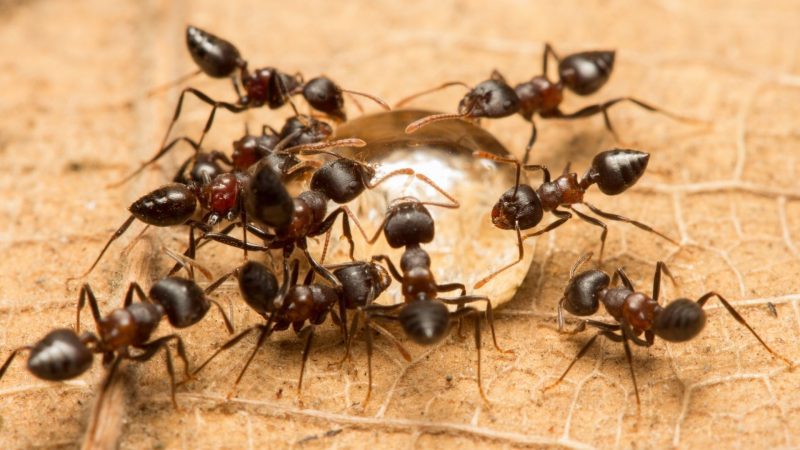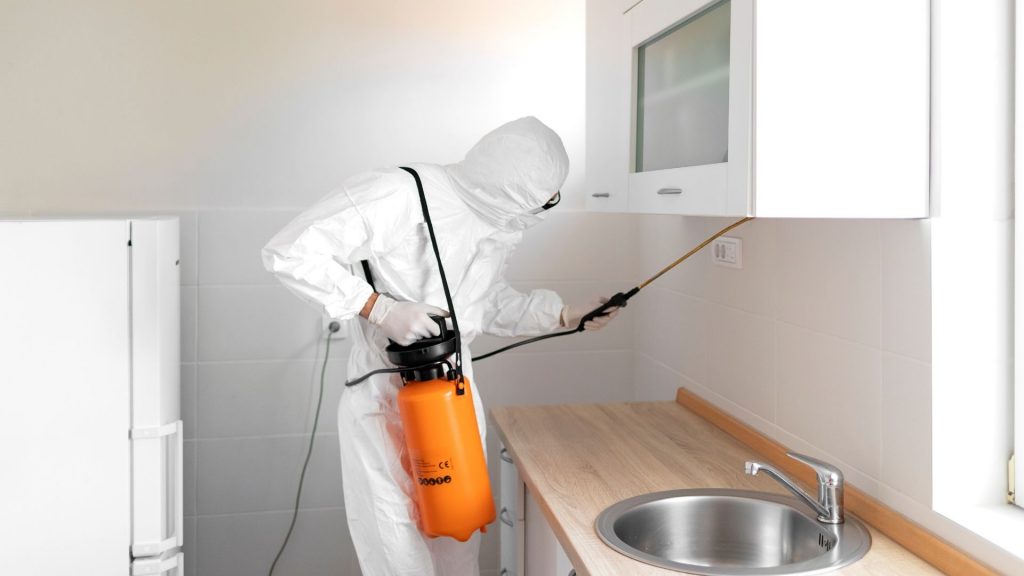When you saw a line of ants crawling on the wall, you thought that applying insect spray would do the trick. There could be a thousand more residing within the cracks and crevices of your wall even after eliminating the visible ones. Hence, it is best to deal with this issue from its core.
Here are the steps on how to get rid of ants in the walls:
1. Identify types of ants nesting in the wall.
2. Identify the nesting place in the wall.
3. Prepare the appropriate bait.
4. Measure the results and adjust.
Getting rid of ants in the wall seems like an easy task to accomplish. Yet, it is not something to take lightly because these unwelcome tenants might destroy your home if left untreated.
Table of Contents
Are There Really Ant Residents in the Wall?

Trails mean that the ant nest could be anywhere in or out of your home. Yet, there are telltale signs that these ants are staying cozy and warm in your home’s wall.
Signs of Ant Residents in the Wall
- Do you see piles of dust and/or wood scraps? This debris means the ants have excavated a part of the wooden wall.
- Find out if the ant trail goes into the wall.
- Ants coming out from the electrical socket also indicate they have settled inside the wall.
- Tap the wood surface using the blunt end of a screwdriver and listen for a hollow sound. When you knock on the wall, ants usually move about inside, so you’ll hear some crunching sound. There are times when you don’t even need to knock but be able to hear ant activity in the wall.
There are factors that can make your home a welcoming environment for ants. One is that they have found access points like cracks or holes for entering your property. Additionally, ant invasion in a home could be due to the weather like winter or drought. Thus, if it has been raining a lot, chances are some parts of the house might have gotten wet, so the ants could have found their breeding spot here.
What Species of Ants Are Your Unwanted Tenants?

Most ants might look similar to one another, but they are not. There are ants that like fats, while others like sweets. Thus, you would be able to prepare the appropriate bait for them.
Common species of ants that may nest within the wall include the following:
- Acrobat ants
- Argentine ants
- Crazy ants
- Odorous ants
- Carpenter ants
Identifying the ant species may also help pinpoint the areas where they might have nested. For example, carpenter ants are most common in Kentucky that prefer moist wood that got wet from roof leaks or badly flashed chimneys.
Types of Baits to Use?

Again, the species of ants will tell you what approach to use to eliminate them. Carpenter ants, for example, like sweets, so follow the steps below:
Step 1: A good bait to use could be small dabs of diluted honey on the (non-sticky) back of masking tape pieces.
Step 2: Do this late at night when they are most active. Once they have fed, follow them patiently as they go back to their nest.
Step 3: Once you find the suspected nest area, drill a series of small holes into the wall and then puff boric acid powder into the holes. The powder may disperse in the void, come in contact with the ants and kill them. For maximized contact, drill 3 – 6 feet on both sides of the spot where the ants are entering.
You may also use other natural remedies that could repel ants, such as the following:
- Peppermint, bay leaves, cayenne pepper, cinnamon and black pepper. Coffee grounds, cucumber, and citrus peels are also said to be natural repellents for ants.
- Another natural remedy you can try is diatomaceous earth. You may place this around the wall of a suspected nest area. This diatomaceous earth has sharp and tiny edges that can abrade the exoskeleton’s waxy coating, dehydrate the ants and cause them to perish. Ingestion of DE could also be fatal to ants.
- You probably heard or read somewhere that vinegar spray is a good natural ant remedy. However, take caution in spraying this near electrical wires and sockets. If you still like to use this vinegar spray, you may mix equal parts of water and vinegar. Spray it on the trail and doorways.
Here is a video about how to get rid of ants naturally:
DIY or Professional Ant Control?

It is understandable when a homeowner first tries to tackle the problem on his own. However, DIY ant pest control may require a lot of patience and research, or else you might end up wasting money rather than saving it.
DIY ant control, just like any DIY pest control, is generally affordable. There are sprays, gels, pastes, and other applications that are available in the store. For some cases, these readily bought materials may effectively eliminate the trails on ants.
However, you will never know if there are a lot of other ants, or possibly even a queen’s presence within your walls. Remember that they excavate the wall so they could cause future destruction to your home’s structure.
This method is convenient. Just book for a service, and the professional will take care of your problem. The team will thoroughly investigate, apply the necessary solution, and could even provide complimentary follow-ups.
They will begin with a home assessment to accurately determine the problem. Professionals are knowledgeable, so they can quickly identify the species of ants in your home.
Pest control experts could also help you with preventive measures to avoid future ant invasions. Suppose you are worried about the potential harm of the too strong chemicals used by professionals. In that case, you may first ask the company about the materials they will use so you can inquire beforehand if it offers natural remedies. This is especially important when you have kids and pets in the house.
What To Do Once The Ants Are Gone?

Moisture attracts ants so make sure that your home is dry at all times. To prevent ants from returning, here are some tips to follow:
- If your roof is leaking, repair it. If the plumbing pipes and fixtures are broken, fix them to prevent the leaks.
- Look also at the exterior part of your home. Is the landscape soil touching the wood siding of your house? Eliminate such wood-to-ground contact as that might provide access points for ants.
- Ants may also enter your home through vegetation and tree limbs that touch the side of the house or the roof. Clip these bridges because ants might be nesting inside a dead tree’s structure and limbs.
- Routinely investigate your home’s foundation. If you see cracks, particularly where the wires and utility pipes enter the home, seal them well.
- Do you use firewood at home? If you do, elevate its storage so the firewood would be away from the foundation. Store the firewood outside the home and not inside your house, not even in the garage. Do not forget that firewood is the main nesting area for ants.
- It is likewise important to keep things in your house clean. Ants are merely following their instinct, which is to find food for their survival. If there are no crumbs on the kitchen, counter, or floor, then there would likely be no ants trying to pick these.
- Don’t give ants reasons to enter your home. Store foods in sealed containers and make sure that you dispose of the trash properly.
List of Sources
Household Ant Invasions Are Determined by Weather, Not Pesticide Use, New Study Finds